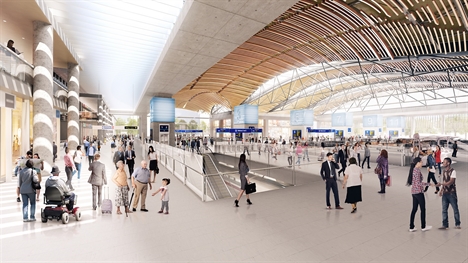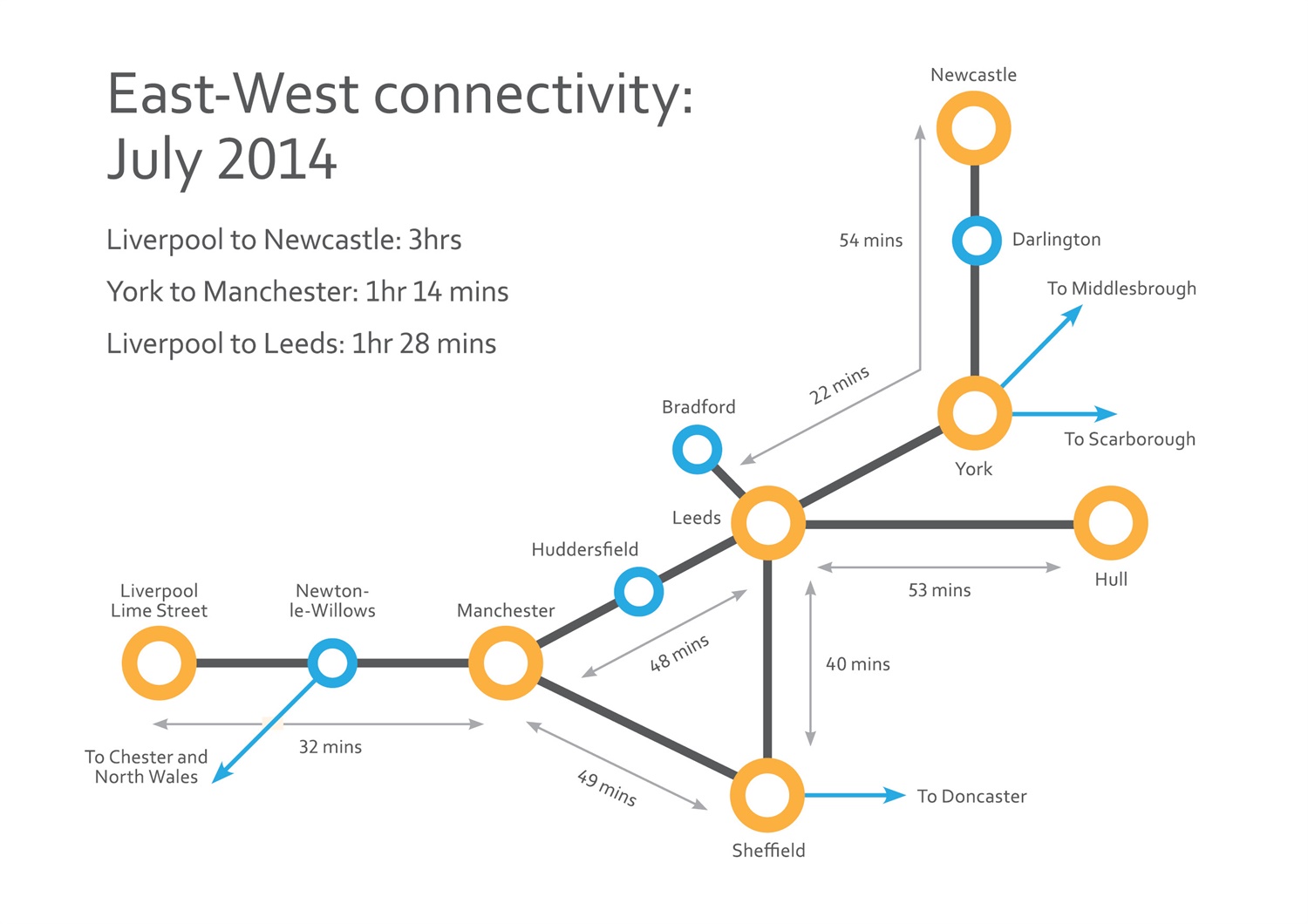01.11.15
HS2 station location – it’s worth getting this right
Source: RTM Oct/Nov 2015
 Jim Steer, founder and director of high-speed rail consultancy Greengauge 21, says more thinking is needed now on the location of HS2’s stations, especially in Yorkshire.
Jim Steer, founder and director of high-speed rail consultancy Greengauge 21, says more thinking is needed now on the location of HS2’s stations, especially in Yorkshire.
Are HS2’s stations properly located? Soon enough the government is due to report its position on phase 2 of the project, the pair of limbs stretching northwards from the West Midlands to Manchester and Leeds. There is continuing debate, especially in Yorkshire – Sheffield and Leeds. Instead of the plans first drawn up in 2010-11, would it be better to have HS2 serve existing – but expanded – city centre stations instead?
Poor station location – a legacy of the Victorian era
It’s worth getting this right. Many English towns and cities have long suffered from poor station location decisions driven by cost considerations, and a lack of network integration dating back to the Victorian era.
The transport secretary is alive to the issue. At the Conservative party conference, he mentioned Yorkshire’s HS2 stations, saying that value for money would be the deciding factor. Over in Sweden, Crister Fritzson, CEO of train operator SJ, is openly questioning whether the planners have yet got the Swedish HSR (high-speed rail) project right – and in particular whether it is acceptable to plan HSR to reach cities but not their centres, which also serve as public transport hubs. It’s the whole journey, he points out, that matters for passengers.
Much improved design for Euston, no ‘retreat’ to Old Oak Common
In Britain, HS2 Ltd has now evolved a much improved design for the London terminus of HS2 at Euston. Neatly allowing a two-phase implementation, the latest version leaves existing platform capacity intact. While some questions remain (what is the best way to arrange passenger transfer with HS1 services at nearby St Pancras?), they are not insoluble. Meanwhile, London mayor Boris Johnson has written to the secretary of state calling for a wider masterplan for the Euston area.

With Crossrail 2 on the way, a new body that provides for local community interests as well as addressing commercial development opportunities would be a good way forward.
With ongoing local concerns, transport minister Claire Perry has rejected calls for a ‘tactical retreat’ to Old Oak Common: we are not going to create the problems SJ’s CEO fears in London at least.
Now for Yorkshire
But the effort taken to get to this point needs to happen in Leeds and Sheffield too. Value for money is especially hard to judge where the choices are between free-standing station designs and those that integrate more closely with local services. The choice cannot be evaluated by reference solely to the costs and benefits of the HS2 project itself. City-region connectivity is as important, alongside the views of local communities and business interests.

The Yorkshire stations need to be examined from a new perspective as far as HS2 is concerned. Ministers are keen to pick up a proposal to build the Yorkshire section of HS2 early, linking Sheffield and Leeds and bringing early benefits to what is a congested and slow part of the national network. This could strongly boost existing long-distance routes such as Newcastle – Leeds – Sheffield – Derby – Birmingham, and offer new city connections such as Bradford – Sheffield – Nottingham, needed to deliver the Northern Powerhouse. Responses to the HS2 phase 2 consultation made clear to the government that more connections between HS2 and the existing network were needed to support such services, reflecting the success of the Javelin trains running on HS1.
They would need to operate into existing stations – Leeds City and Sheffield (Midland) – rather than Leeds New Lane or an elevated station at Meadowhall. Both existing city stations are going to need rebuilds/extension anyway: adding HS2 into the mix is an addition to a pre-existing challenge. The value for money calculation that the secretary of state rightly calls for has to consider much more than the HS2 project benefit-cost ratio.

Accelerating delivery of the HS2 route in Yorkshire
For political leaders persuaded of the benefits of high-speed rail, they can’t be delivered fast enough. This was the reasoning behind the creation of the new Infrastructure Commission chaired by Lord Adonis. Pace in delivery is dependent on having got the planning right – as Sir David Higgins has repeatedly made clear from his experience with the London Olympics. For Yorkshire, waiting for HS2 phase 2 – some seven years after the north west gets its HS2 services – is a concern. Accelerating delivery of the HS2 route in Yorkshire would help deliver east-west balance to the Northern Powerhouse.